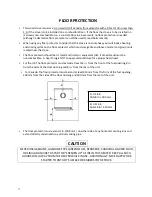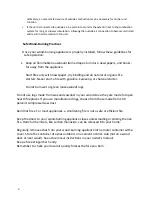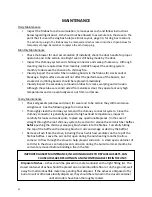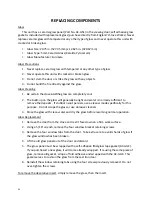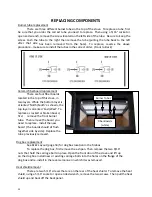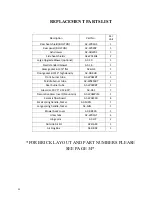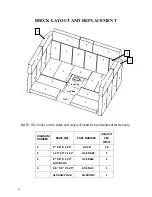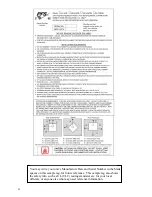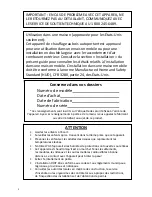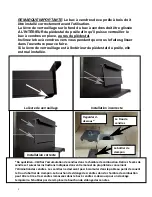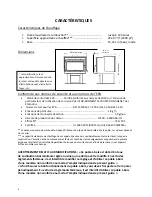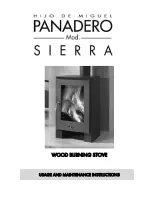
‐
Fuel
Selection:
Once
your
wood
‐
burning
appliance
is
properly
installed,
building
an
effective
fire
requires
good
firewood
(using
the
right
wood
in
the
right
amount)
and
good
fire
building
practices.
The
following
practical
steps
will
help
you
obtain
the
best
efficiency
from
your
wood
stove
or
fireplace.
Season
wood
outdoors
through
the
summer
for
at
least
6
months
before
burning
it.
Properly
seasoned
wood
is
darker,
has
cracks
in
the
end
grain,
and
sounds
hollow
when
smacked
against
another
piece
of
wood.
Store
wood
outdoors,
stacked
neatly
off
the
ground
with
the
top
covered.
Burn
only
dry,
well
‐
seasoned
wood
that
has
been
split
properly.
Start
fires
with
newspaper
and
dry
kindling
as
discussed
earlier
in
the
manual.
Burn
hot
fires.
To
maintain
proper
airflow,
regularly
remove
ashes
from
your
wood
‐
burning
appliance
into
a
metal
container
with
a
cover
and
store
outdoors.
Moisture
Meter
Information
Firewood
is
ready
at
10
‐
25%
moisture
content.
Newly
‐
cut
logs
can
have
a
moisture
content
(MC)
of
80%
or
more,
depending
on
species.
Since
wood
shrinks,
and
can
also
split,
twist
or
otherwise
change
shape
as
it
dries,
most
wood
is
dried
before
being
used.
Air
drying,
or
‘seasoning,’
is
the
most
common
method
used
for
cord
wood.
In
most
parts
of
the
United
States,
the
minimum
moisture
content
that
can
be
generally
obtained
in
air
drying
is
about
12
to
15
percent.
Most
air
‐
dried
material
is
usually
closer
to
20
percent
moisture
content
when
used
To
test
your
firewood,
simply
push
the
pins
into
the
wood
and
wait
for
a
reading.
Remember,
don't
just
stick
the
meter
into
the
ends
of
your
firewood
.
To
get
the
most
accurate
reading,
split
the
wood
and
test
the
center.
The
center
of
the
log
will
contain
the
most
moisture.
How
Far
Should
I
Drive
Non
‐
Insulated
Pins
into
Wood?
To
full
depth
if
possible.
However,
at
moisture
levels
below
10%,
it
is
usually
sufficient
to
make
good,
positive
contact
with
the
wood.
At
higher
levels
of
moisture
and
especially
if
you
have
a
steep
gradient,
full
penetration
is
a
must.
29



